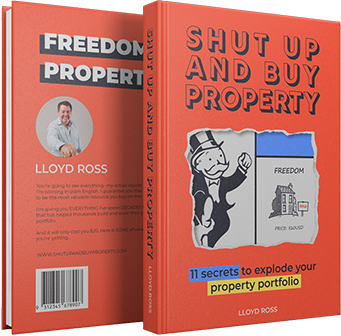It’s a fact: property investment has grown into a massive industry over the past few years.
From TV shows to your friends and neighbors, it seems everyone is investing these days.
Because there are many ways a person can make a lot of money in property, you’re seeing many people rush into ‘the game.’ Yet, there are so many ways to lose a lot of that money too.
If you are thinking of investing, you need to know which property investment strategies work.
If you don’t, you could be in to lose a lot of money!
Are you a new potential property investor? Do you want to have all the resources you need to invest smart? Here are 5 property investment strategies for beginn
1. The Exit Strategy
Before you even begin the investment process, you need to have an exit strategy for when you need to get out.
A clear plan for how and when to sell your investment is one of the most important tools you will have in this industry.
Even before you sign the bill of sale or even make an offer to buy, you have to know when your end game is.
To maximize the strength of your exit plan, be sure to understand the local economy and job situation. These little variables can make a huge difference when it comes time to sell up.
2. The Buy and Hold Strategy
One of the most utilized property investment strategies is the Buy and Hold Strategy. This sees an investor buy a property with the intention of renting it out for some time before selling it.
Several recent surveys show that property values in the Gold Coast region are set to rise, so this may be a prime place to test this strategy.
This allows the investor to generate steady income from the property over a long time. Sometimes, this is better than a lump sum payment upon sale.
It’s important that a prospective investor do their research about the local area. This allows you to understand the factors that may effect you before investing. Even better, this can keep you from losing money on a bad investment.
An important thing to consider is how much you are willing to manage when it comes to these properties.
Are you interested in only a single family homes, or an entire apartment building?
Are you interested in serving as a landlord? Or would you need to hire a management company to handle the affairs of the properties?
There are pros and cons to all these options, but it’s up to you, as the investor, to determine what is the best answer.
3. The Flipping Strategy
Of all the property investment strategies on this list, this is likely the most well known. Due to the success of several TV shows, ‘flipping’ has become a common verb.
Unlike the buy and hold strategy, the flipping strategy is a short-term one, and it can return a profit, fast!
Flipping is the process of purchasing a property, renovating it and fixing any issues, and then reselling it for a profit. This allows investors to make a return on their investment in a short time, causing excellent capital appreciation.
Though portrayed on popular television as occuring in only weeks, the average duration of a ‘flip,’ is closer to the 18- to 24-months. While not a “quick rich quick” scheme, they do have the potential for significant profits.
When using this strategy, make sure you consult with a trusted appraiser to identify any potential deal breakers before money on the ‘flip.’
4. The Renovation Strategy
Much like flipping, the Renovation Strategy sees an investor buy an inexpensive property and, as time allows, renovate it.
In doing so, the investor is able to increase the price of the property, which allows a decent profit when the property sells in the future.
This strategy is one of the more simplistic options available to investors, and one that is more of a ‘long game’ than the Flipping Strategy is.
Because of this, Renovation is often considered by first-time investors who need experience. It also allows them to generate enough funds to move into more large-scale property investment strategies.
5. The Wrapping Strategy
Compared to simpler options, the wrapping strategy is pretty complex for beginners.
To use this strategy, an investor must buy a property at below market value, then resell that property at the market price.
An investor will use vendor financing to “wrap around” the existing mortgage. This allows the investor to receive regular payments instead of a single lump sum payout.
This is a good property investment strategy if an investor has no deposit funds. Also, this is a good strategy if you have difficulty qualifying for regular financing.
The Wrapping Strategy can close the gap and generate small regular payments for you.
The Long and Short of Property Investment Strategies
In this post, I’ve talked about the similarities between different property investment strategies. It’s important that investors understand these differences and similarities. But it’s more important to understand how they fit into your own situation. If you can understand that, you can develop your own investment strategy.
If you need to generate quick income, then the Renovation Strategy may not be best for you. If you don’t want the hassle of tenants, then Buy and Hold will likely not work for you.
These are only some of the property investment strategies available to you. But it’s important to recognize that they are not the only ones.
As you enter the investment business, be open to new property investment strategies. New opportunities will often present themselves.
And always remember: a well defined investment strategy is the key to success.
If you need more tips, don’t hesitate to contact us to set up a meeting. We can discuss other property investment strategies, and how to improve your existing strategy.










